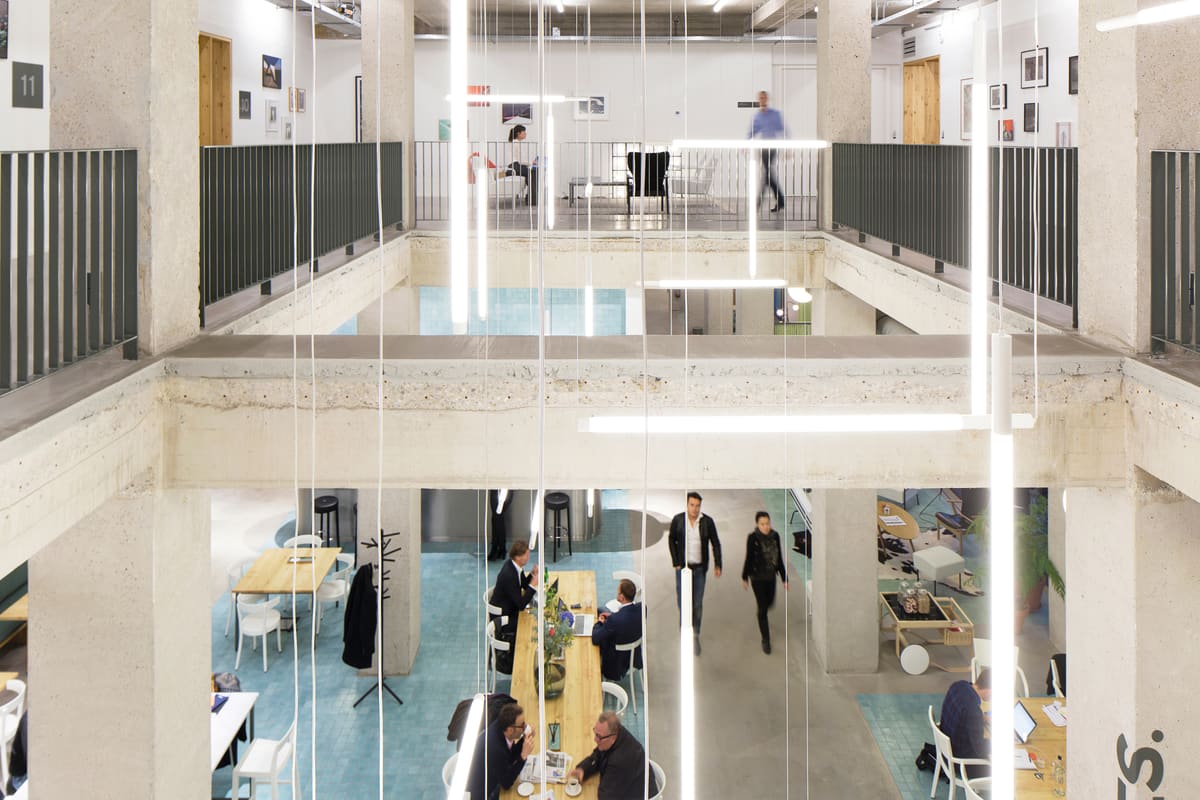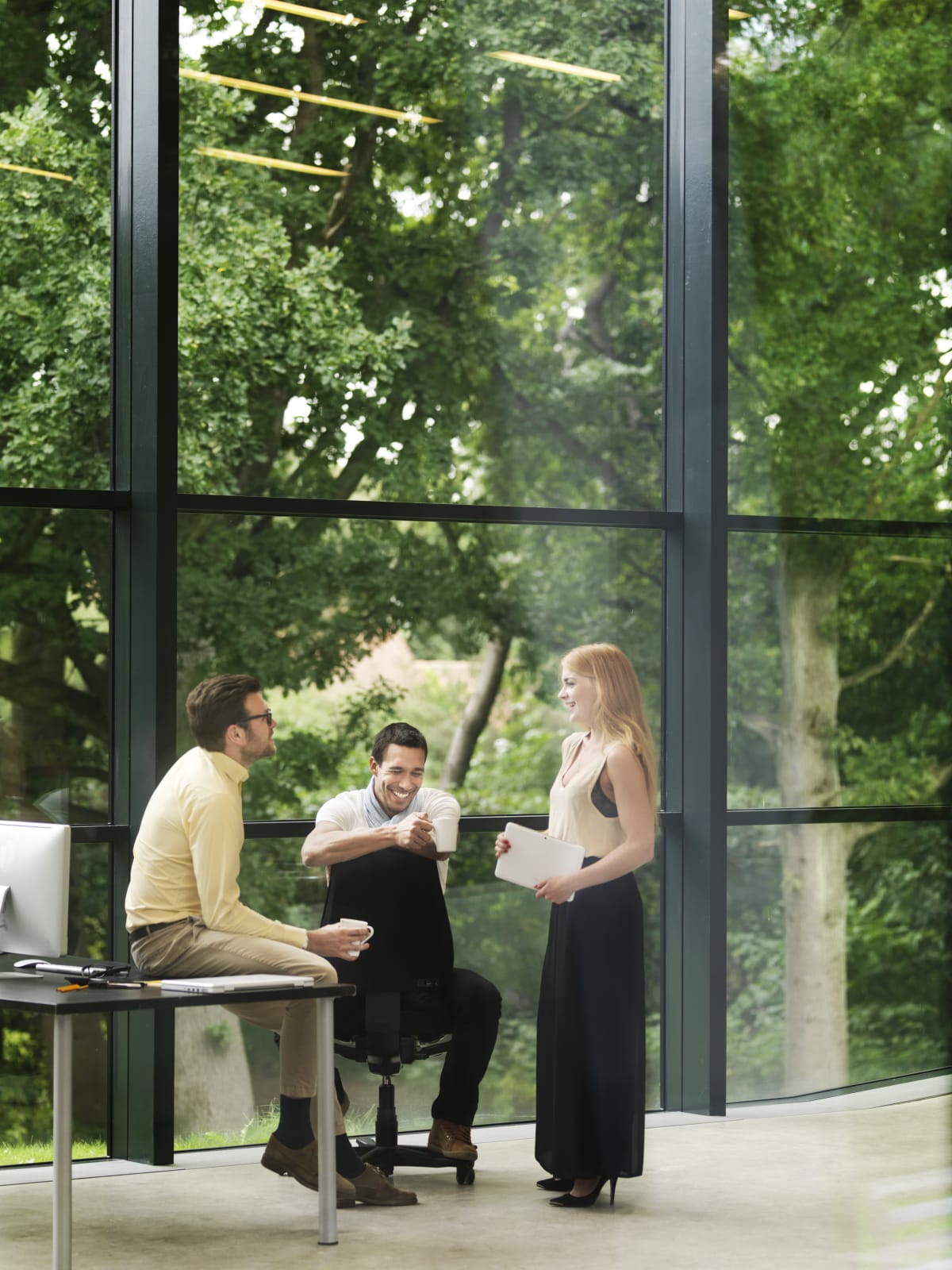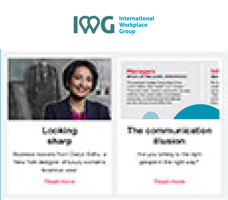For better productivity, it pays to think flexibly
With many businesses now looking at their workplaces in terms of health and hygiene, a question is being asked: is the conventional office model set up for social distancing?
No, says Dr Shrikant Sharma, head of analytics at Buro Happold, an engineering consultancy firm that has used predictive modelling technology to understand modern office use. “[In the short term,] one could achieve social distancing by phased return, occupying fewer desks within the same office, with robust communication on maintaining social distancing and sanitation,” he says. “However, to achieve a resilient and responsive workplace in the longer term, organisations we need to rethink the design of the workplace entirely.”
For the moment, he suggests businesses start to think “immediately” about how they can use their existing workplaces effectively and safely as the workforce returns to work.
Of course, this isn’t the first time that office design has changed to reflect a wider cultural shift. To understand, what a new office environment might look like, it’s helpful to look back at how the office has evolved over the years. How did we manage to go from the First Industrial Revolution (which did so much to liberate workers from backbreaking tasks) to the Fourth Industrial Revolution (which did so much to liberate them from a fixed place of labour) – and how did offices change in the process?
The path from office with cubicles to the open-plan variety can be traced by popular culture and real-life examples. In the 1960s-set advertising-industry drama Mad Men, agencies were portrayed with strict divisions that allotted workers their own distinct workspace. But as Western society adopted more relaxed attitudes to work (and life), walls started coming down both physically and figuratively.
By the 2000s, real-life ad agency Mother became one of the most well-known examples of doing away with individual workspaces entirely. In fact, their model took it one step further: a modular 250ft concrete desk was introduced into a vast space, and hot-desking became the modus operandi for whichever employees were on site that day.
As a workspace-provider of 30 years’ standing, IWG has been at the forefront of office culture and its development. From the outset, when the company opened its first centres in Belgium, flexibility was at the top of the agenda. Creating offices closer to home – places that allowed its members to tweak the workday to suit them, rather than the other way around – was the end game. Today, the company has evolved into a multi-brand proposition with a solution for every type of business at every time of day. From the streamlined premises of Regus to the design-driven environments of Spaces, IWG has created working solutions that provide space for meetings, privacy and quick drop-ins alike.
The option to simply drop in on a fully functioning workspace – wherever you are in the world – is almost unprecedented in the history of the office. Unless you work for a multinational corporation with a truly global reach, being able to access a desk with super-fast Wi-Fi and associated business infrastructure like printers and scanners is almost unheard of. And even if you do work for that multinational, the local set-up is likely to be different from the arrangement on home turf, and the likelihood of finding a spare desk in an unfamiliar building will be slim, that’s if you can convince the front desk to let you in in the first place!
The myth that flexspace is solely for startups and small businesses is fast becoming outdated. Perhaps surprisingly, it’s often large corporations that prove to be nimblest when it comes to acquiring new workspace for specific teams. For software giant Oracle’s development team, it made sense to eschew an open-plan office in favour of a Regus property that offered more privacy: “We have the option to choose closed offices or open-plan, depending on what the local team requires,” says Thierry Leservot, who manages the company’s property needs in France. “In Montbonnot, for example, we opted for closed because the developers there manage calls all day long.”
Think about your own home. If you spent five days a week surrounded by friends and family in your living room, you’d likely emerge rather frazzled at the end of it – yet that central space, wherever anything and everything goes, is exactly how many offices have become in recent decades. The activities in an office may be different but the principle remains the same.
Flexspace, on the other hand, is not only flexible in terms of the length of the lease: floor space can be adapted to suit different ways of working, from a private room for quiet contemplation to the breakout space required for informal get-togethers.
For the broker or property director, flexspace can offer significant advantages over traditional real estate. Rather than presenting stakeholders with a portfolio of static properties, each of which come with not only their various merits but also their inevitable drawbacks, flexspace can be tailored to fit the exact needs of the company – and it can be tweaked when those needs change, making it a model of agility, flexibility and scalability (let’s not forget: less commitment for the end-user can also make for an easier sell). And because leases can be tweaked, expenditure can be tweaked alongside it.
As the way we think about work shifts from being a place-based to an activity-based working, the nature of the flexible office seems like the right tool for the job. From sole trader to startup, and medium-sized company to global conglomerate, flexspace can work for everyone.
Contact us for personal guidance on building a tailored corporate solution






